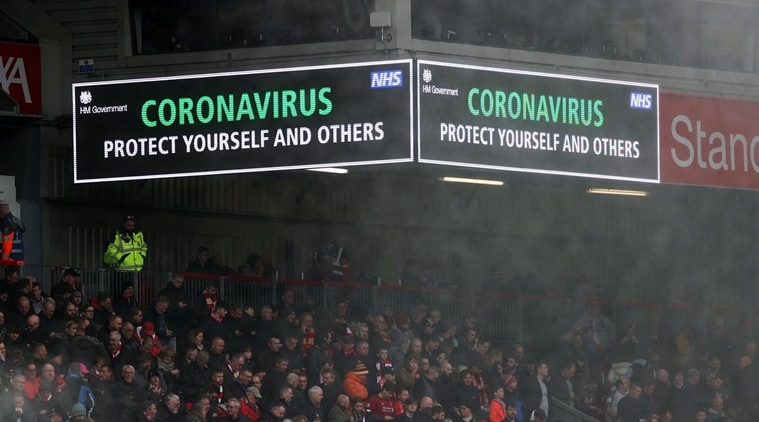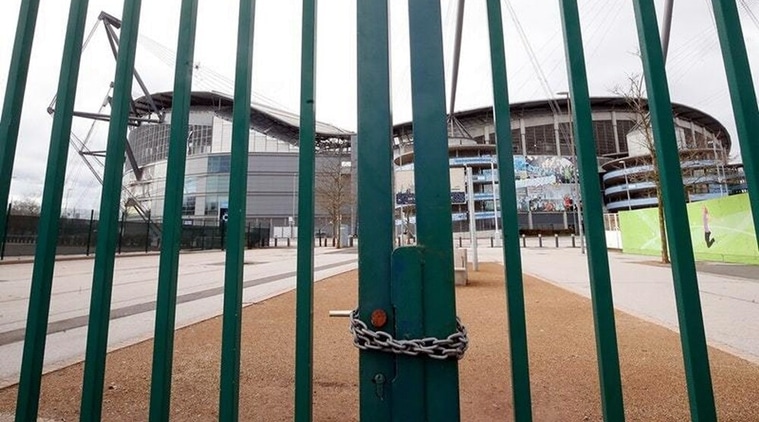 Premier League faces a loss of over €860million from broadcasting contracts. (Source: Reuters)
Premier League faces a loss of over €860million from broadcasting contracts. (Source: Reuters)
Just like any other industry, football faces before itself an almighty financial hurdle. Instead of witnessing the end of the domestic leagues, FIFA and its stakeholders find themselves manoeuvring through a minefield of problems related to player transfers and contracts this year due to the Covid-19 pandemic.
In every nook and cranny of the world, football stuttered to a halt by mid-March. With minuscule clarity about the resumption, leagues like Premier League, La Liga, and Bundesliga are feeling the financial squeeze. If football fails to return, a disruption in income from broadcasting rights and gate receipts will hit the funds available for transfer fees and player contracts. But that’s not the only problem.
What and when?
Putting an end to the initial hope of completing the 2019/20 season by June 30, FIFA announced earlier this month that the transfer window will be delayed to accommodate it between the revised end dates for the ongoing season and the start of the 2020/21 campaign. But there’s still a lot shrouded in mystery.
Hypothetically, if the Bundesliga restarts on May 9 as per recent reports and finishes by mid-June, and the Premier League restarts behind closed doors in June and finishes well into July, how will the transfer windows be synced? If a transfer deal takes place between two clubs in Europe, when would a player join a new team? Will the player get to feature in the ongoing season or will there be a wait till the start of 2020/21 season?
As it stands, the Premier League’s transfer window opens on June 10 and runs for 12 weeks until September 1, whereas in other leagues, the window generally runs from July 1 to August 31. Given when the leagues may reopen, the set dates have to be reworked to allow clubs to devise a clear strategy for buying and selling players.
‘Show me the money?’
 DFL CEO believes that the transfer market will “collapse” this summer. (Source: AP Photo)
DFL CEO believes that the transfer market will “collapse” this summer. (Source: AP Photo)
The window might get rescheduled as per the conveniences of the leagues, but there’s the bigger question about money — how much can the clubs really spend?
Although Premier League clubs went on a spending spree the last four summer windows (over €1.2 billion), the situation isn’t the same this time. With Premier League suspended indefinitely, it reportedly faces a loss of over €860million from failure to satisfy broadcasting contracts. Moreover, the worldwide shutdown has badly hit a barrage of its sponsors, from airlines to betting companies, which is expected to hit the clubs’ commercial revenue.
“In the short term, I would say the transfer market this summer will not exist, it will collapse,” Christian Seifert, the CEO of the German Football League (DFL) told The New York Times. “Some leagues will understand that money is nothing that is coming automatically every month from heaven.”
Seifert’s pessimism is shared by former Bayern Munich president Uli Hoeness, who in March said to Germany’s kicker, “The current situation is a threat… transfer fees in excess of €100million will be a thing of the past for the next few years. There will most likely be a new footballing world.”
Going one step further, Damien Comolli, the former director of football of Liverpool and Tottenham Hotspur, indicated that an agent had told him only three clubs in the Premier League may have any spending power this summer.
“We might see very little transfer activity. We might see swaps, we might see loans and I think we are going to see a massive decrease in transfer fees,” Comolli told in an interview with Sky Sports. “The longer this crisis goes on, the more clubs are going to be in a financially difficult situation. The first thing that will be impacted will be player remuneration, the second thing will be transfer fees.”
How do they sign?
 Hakim Ziyech has a pre-contract agreement with Chelsea for this summer. (Source: AP Photo)
Hakim Ziyech has a pre-contract agreement with Chelsea for this summer. (Source: AP Photo)
Instead of preparing for an arms race for talent, the focus of clubs across Europe are on meeting the wage bills of their existing players. In addition to that, there’s a headache about the players whose contracts are set to run out on June 30.
Much to the respite of the clubs though, earlier this month, FIFA swooped in to save the day for players like David Silva, Edinson Cavani, Thiago Silva, Jan Vertonghen, and Zlatan Ibrahimovic whose futures are uncertain. The global footballing body said the contracts would be extended “until such time that the season does actually end.” Their statement also added, “A similar principle applies to contracts due to begin when the new season starts, meaning the entry into force of such contracts is delayed until the next season actually does start.”
But even then, the same dilemma of the dates of different leagues not being in tandem will have a ripple effect in the case of expiring contracts. Will players find themselves unemployed if their league finishes before others? What exactly is in store for Hakim Ziyech (Chelsea from Ajax for €44million) and Francisco Trincao (Barcelona from Braga for €31million) who have pre-contract agreements?
According to CIES Football Observatory, a research group within the Switzerland-based International Centre for Sports Studies, the total transfer value of players from the top-five leagues before the outbreak was €32.7 billion. If the shutdown continues and player contracts are not extended, that value will fall by 28 percent to €23.4 billion due to factors like age, contract duration, and recent form.
If FIFA doesn’t offer more clarity, Italy’s Serie A could be the biggest loser in terms of free agents. An ESPN report estimated the league will lose 26 percent of its players, while La Liga would lose just under a quarter. The Premier League would be the least affected, with a loss of 12.9 percent of its players.
Apart from the fall of transfer values of players, there’s the hurdle of settling an existing debt — Premier League clubs owe close to €1.8 billion in outstanding transfer payments based on accounts published at the end of the 2018/19 season. “Many clubs could be threatened by insolvency and transfer plans could come to a standstill for most clubs because of the many uncertainties,” said Matthias Seidel, founder of the website, Transfermarkt, to AFP.
Given the uncertainties revolving around the financial woes of the clubs, FIFA might even have to rip up its rulebook and come up with a new one as the transfer market will be unlike anything ever witnessed before.